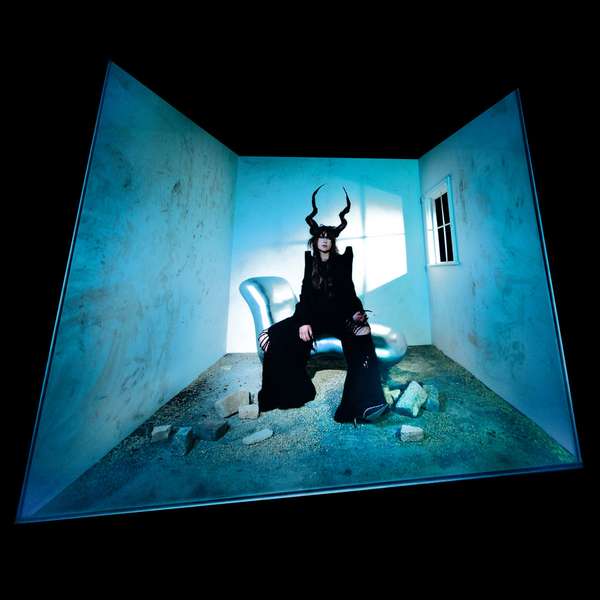Haley Fohr's artistic vehicle, Circuit des Yeux, defies categorisation. Stamping the indie folk label on her was superficial, something dispelled easily once you have experienced the lo-fi distortion of "The Girl With No Name." It might be that under the layers of sonic disfigurement, a folk ethos is present in Fohr's narrative sensibility, but it is no longer the same. It has been altered, mutated. The truth is that Fohr is a wandering artist, moving from one scene to another, collecting ideas and motifs to inform and complete her vision.
Her latest work, Halo On The Inside, arrives after a triptych of astounding releases. From In Plain Speech's cosmic essence to Reaching for Indigo's drone-y dreams and -io's dramatic classicism, Fohr can aptly transform and channel entire lineages of artistry. Halo On The Inside is another differentiator, another point of divergence from the past, probably more so than any other work Circuit des Yeux have produced.
The sound of industry settles in. "Megaloner" with its precise beating heart sees a departure from the past's organic foundation, and further extends into the electronica domain as the bizarre synthesizers join in. This switch comes with some serious thought and care, with Fohr dedicated to create a complex and layered record that retains a sense of immediacy. The electronic component is an example, working as the backbone to "Truth." Here, the vocal sample acts as the percussive element that defines the tribal rhythm, echoing Coil's feverish dreams in "The Tenderness of Wolves." And it does not stop there. The entire approach is an ode to sonic manipulation and its controlled chaos. The feedback roars, the effects spiral into discordance, yet Fohr retains focus over her compositions. Take the introduction to "Anthem of Me" and its overwhelming distorted grandeur, the feedback taking hold and squeezing out any hope. And yet the vocals stand in defiance.
The centrepiece to all Circuit des Yeux releases is Fohr's voice, and that is also the case in Halo On The Inside. However, here the approach takes a cue from darkwave when it comes to mood, not far detached from the early Dead Can Dance offerings. It results in a smooth delivery, highlighted best when the instrumentation returns to a sense of minimalism in "Cosmic Joke." Or, when the 80s-inspired beats settle down in "Organ Bed" before the ascent toward another sax-induced disorder crescendo. It further evokes this relationship between the organic and the inorganic, the industrial and the humane. "Canopy of Eden" exemplifies this approach, the soaring vocals fighting against the electronic procession. But, there are also times of convergence, as with "Skeleton Key" and its laissez-faire instrumentation allowing the vulnerability to pierce through. It is then, of course, demolished once the big, bombastic drums and guitar/synth lead lay waste to all in the second half of the track. But that is what is supposed to happen.
Looking back at Circuit des Yeux works, despite the breadth of creativity and sonic experimentation, I can find a single thread that runs through her work. Introspection. The components of Halo On The Inside are chosen and employed in such a way as to highlight this characteristic. The industrial beats describe the corridors of the mind, not the empty streets of a dystopian city. The ethereal vocal delivery and its incredible range morph into internal voices, not external characters. This is a record of solitude, of gazing into the self and all its otherworldly components. In that way, it is a fitting continuation to the Circuit des Yeux discography, and it brings excitement when wondering what the next chapter might be.



